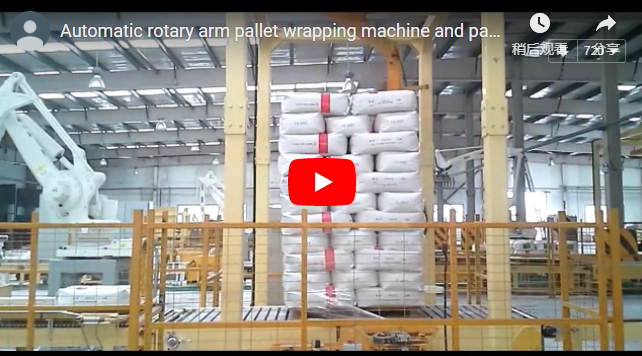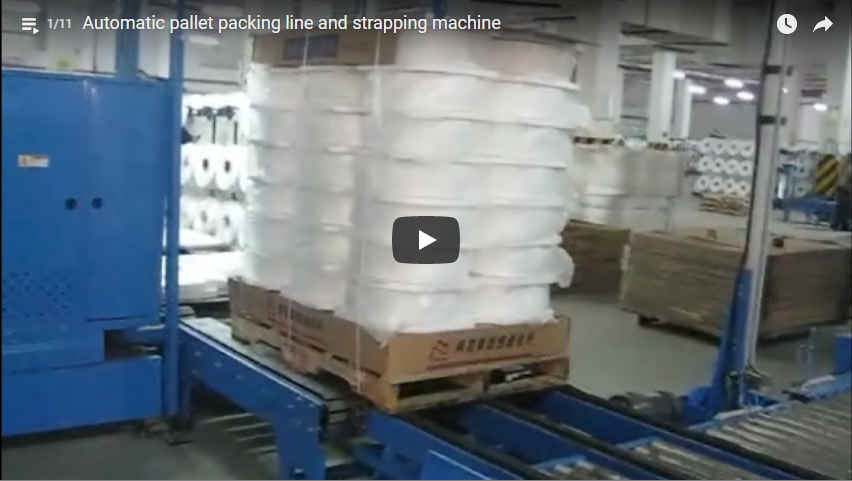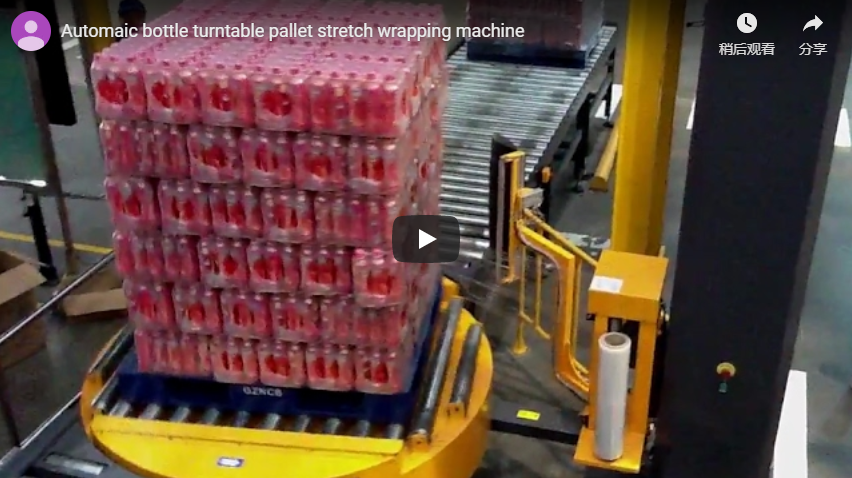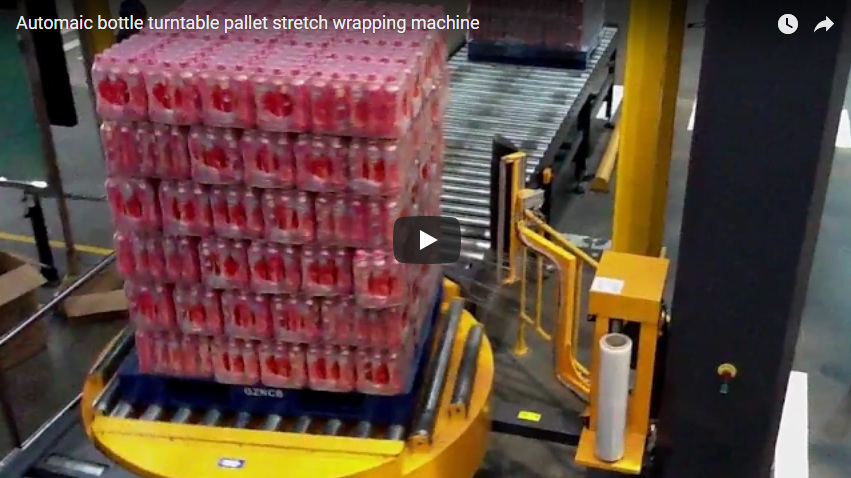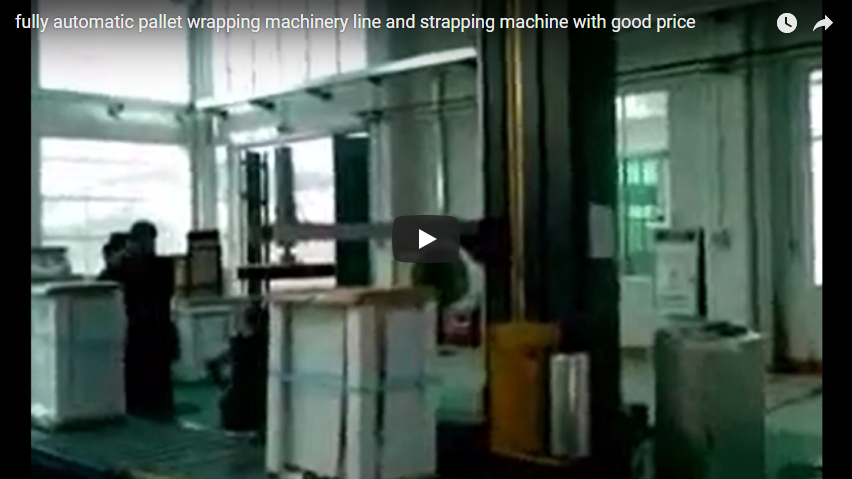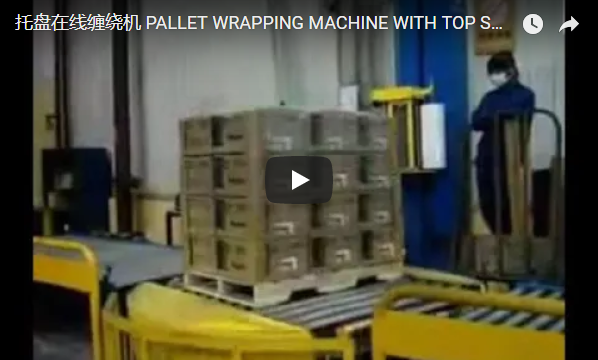Handling unstable, oversized, or exceptionally heavy pallet loads presents a significant challenge in automated packaging lines. The rotary arm pallet wrapping machine, particularly models featuring integrated conveyors and automatic film cutting and clamping, offers a sophisticated engineering solution designed specifically for these demanding applications. Unlike traditional turntable wrappers, this design keeps the load stationary while a wrapping arm revolves around it, ensuring load integrity and maximizing operational efficiency.
This article delves into the design, technical specifications, operational advantages, and user experience aspects of advanced rotary arm stretch wrappers, providing valuable insights for engineers and operations managers seeking high-performance packaging automation.
1. Operational Principle and Design Philosophy
The core design principle of a rotary arm pallet wrapping machine centers on stabilizing the load. By keeping the pallet static on a conveyor section and rotating the film carriage assembly around it, the machine eliminates the centrifugal forces inherent in turntable systems. This makes it the preferred solution for:
- Unstable Loads: Tall, light, or irregularly stacked products that might shift or topple on a rotating platform.
- Heavy Loads: Loads exceeding the weight capacity or dynamic stability limits of typical turntable bearings and drive systems (often >2000 kg).
- High Throughput Lines: Eliminating the start/stop inertia of rotating a heavy pallet can contribute to faster cycle times in fully automated lines.
The machine's structure typically involves a robust overhead frame or a substantial floor-mounted gantry supporting the rotating arm mechanism, ensuring stability and durability during high-speed rotation.
2. Core Components and Construction
Understanding the key components reveals the engineering behind the machine's performance:
- Rotating Arm Assembly: Typically constructed from fabricated steel for rigidity and balance. It houses the drive system (often a frequency-controlled motor and gear reducer or a slewing ring bearing) for precise speed control and smooth motion.
- Film Carriage System: Mounted on the rotating arm, this critical sub-system manages film delivery. Advanced carriages feature:
- Powered Pre-Stretch: Electronically controlled rollers stretch the film (up to 250-300% or more) before application, maximizing film yield and ensuring consistent wrapping tension. This significantly reduces consumable costs.
- Film Tension Control: Sensors and feedback loops maintain consistent tension regardless of roll diameter or load shape.
- Easy Film Loading: Ergonomic designs for quick and safe film roll changes.
- Control System: A Programmable Logic Controller (PLC) serves as the brain, orchestrating all machine functions. A Human-Machine Interface (HMI), usually a touchscreen panel, provides operator control, parameter adjustment, recipe storage, and diagnostics.
- Frame and Mast: Heavy-duty steel construction provides the necessary structural integrity to support the rotating arm and withstand operational vibrations.
- Conveyor System: Integrated powered roller or chain conveyors manage pallet entry, positioning within the wrapping zone, and exit. Sensors detect pallet presence and position for seamless automation.
- Automatic Film Cut and Clamp System: Pneumatically or electrically actuated mechanism that automatically cuts the film tail at the end of the cycle and clamps it, ready for the next pallet, eliminating manual intervention.
3. Key Technical Specifications
When evaluating rotary arm wrappers, consider these critical parameters:
| Parameter | Typical Specification Range | Importance |
|---|---|---|
| Max. Load Dimensions (LxWxH) | Varies widely; e.g., 1300x1300x2200 mm | Defines the maximum pallet size accommodatable. |
| Max. Load Weight | Often unlimited (depends on conveyor) | Key advantage for heavy loads. |
| Arm Rotation Speed | 12 - 30 RPM (adjustable) | Directly impacts throughput (pallets per hour). |
| Wrapping Height Capacity | Up to 2000mm, 2400mm, or higher | Must match or exceed maximum load height. |
| Film Pre-Stretch Ratio | Up to 250% / 300% (variable) | Crucial for film economy and load containment. |
| Film Type Compatibility | LLDPE Stretch Film | Specify gauge (microns) and roll width/diameter. |
| Conveyor Speed | 8 - 15 m/min (adjustable) | Needs synchronization with line speed. |
| Control System | PLC (e.g., Siemens, Allen-Bradley) | Reliability, programmability, integration ease. |
| HMI Interface | Touchscreen, 7-10 inches | Ease of use, diagnostics, recipe management. |
| Power Requirements | 400V/3Ph/50Hz (or per region) | Electrical supply considerations. |
| Pneumatic Requirements | 5-6 Bar | For cut/clamp and potentially other actuators. |
4. Automation and Control System
Modern rotary arm wrappers boast sophisticated control systems enabling:
- Multiple Wrapping Programs: Pre-set or customizable recipes for different load types (e.g., varying rotation speeds, film tension, number of top/bottom wraps, reinforcement wraps).
- Parameter Adjustment via HMI: Intuitive touchscreen controls for on-the-fly adjustments of speed, tension, overlap, height sensing, etc.
- Integration Capabilities: Easily integrates into fully automated packaging lines using standard communication protocols (e.g., Ethernet/IP, Profinet) to communicate with upstream and downstream equipment (palletizers, labellers, AGVs).
- Remote Diagnostics: Some models offer remote access for troubleshooting and support.
5. Performance and Efficiency Advantages
The rotary arm design translates into tangible benefits:
- High Throughput: Capable of wrapping 40-70+ pallets per hour, depending on load size, wrap pattern complexity, and rotation speed.
- Optimized Film Consumption: Powered pre-stretch systems can reduce film usage by 50-75% compared to manual or lower-spec mechanical stretch systems.
- Consistent Wrap Quality: Automated control ensures every pallet is wrapped to the same specification, improving load stability and reducing product damage during transit.
- Reduced Labor Costs: Fully automated operation, including film cut and clamp, minimizes the need for manual intervention.
- Enhanced Safety: Eliminates manual wrapping risks and incorporates multiple safety features.
6. Safety Features and Compliance
Safety is paramount in automated machinery. Typical features include:
- Perimeter Guarding: Physical barriers or light curtains prevent personnel access during operation.
- Emergency Stop Buttons: Strategically located E-stops for immediate shutdown.
- Arm Obstruction Sensors: Detect interference in the arm's rotation path, triggering a stop.
- Safety Interlocks: Ensure doors and guards are closed before operation can begin.
- Audible/Visual Alarms: Signal machine status or fault conditions.
- CE Marking / UL Certification: Compliance with relevant international safety standards (CE Marking for Europe, UL for North America).
7. Application Scope and Load Handling
Rotary arm wrappers excel in industries such as:
- Logistics and Distribution Centers
- Food and Beverage (bottling, canning)
- Building Materials (cement, bricks)
- Chemicals
- Paper and Printing
They are particularly suited for loads that are inherently unstable, very tall, extremely light (preventing sliding on a turntable), or exceptionally heavy.
8. User Experience and Maintenance Considerations
From a user perspective, key factors include:
- Ease of Operation: Intuitive HMI design simplifies program selection and minor adjustments.
- Film Loading: Systems like hinged or drop-in carriages make film roll changes faster and safer.
- Reliability: Robust construction and quality components minimize downtime.
- Maintenance Access: Thoughtful design allows access to key components (motors, sensors, pneumatics) for routine checks and maintenance (e.g., lubrication, sensor cleaning, roller inspection). Scheduled preventative maintenance is crucial for long-term performance.
9. Rotary Arm vs. Turntable Wrappers: A Comparative Overview
| Feature | Rotary Arm Wrapper | Turntable Wrapper |
|---|---|---|
| Load Stability | Excellent (Load is stationary) | Good (Potential issues with unstable loads) |
| Max Load Weight | Very High / Unlimited (Conveyor dep.) | Limited (Typically 1500-2500 kg) |
| Speed/Throughput | Potentially Higher | Generally Moderate to High |
| Footprint | Often Larger (Requires arm clearance) | Generally More Compact |
| Complexity | Higher (Rotating arm mechanism) | Lower |
| Initial Cost | Higher | Lower |
| Best Suited For | Unstable, Heavy, Oversized Loads | Standard, Stable Pallet Loads |
Conclusion
The conveyorized rotary arm pallet wrapping machine with automatic film cutting and clamping represents a peak solution for challenging pallet wrapping applications. Its design directly addresses the limitations of turntable systems when dealing with unstable or very heavy loads. By offering high throughput, significant film savings through advanced pre-stretch technology, consistent wrap quality, and enhanced safety features, these machines provide a robust return on investment for operations demanding high levels of automation, efficiency, and load security in their end-of-line packaging processes. Careful consideration of technical specifications, component quality, and control system capabilities is essential when selecting the right model for a specific application.

